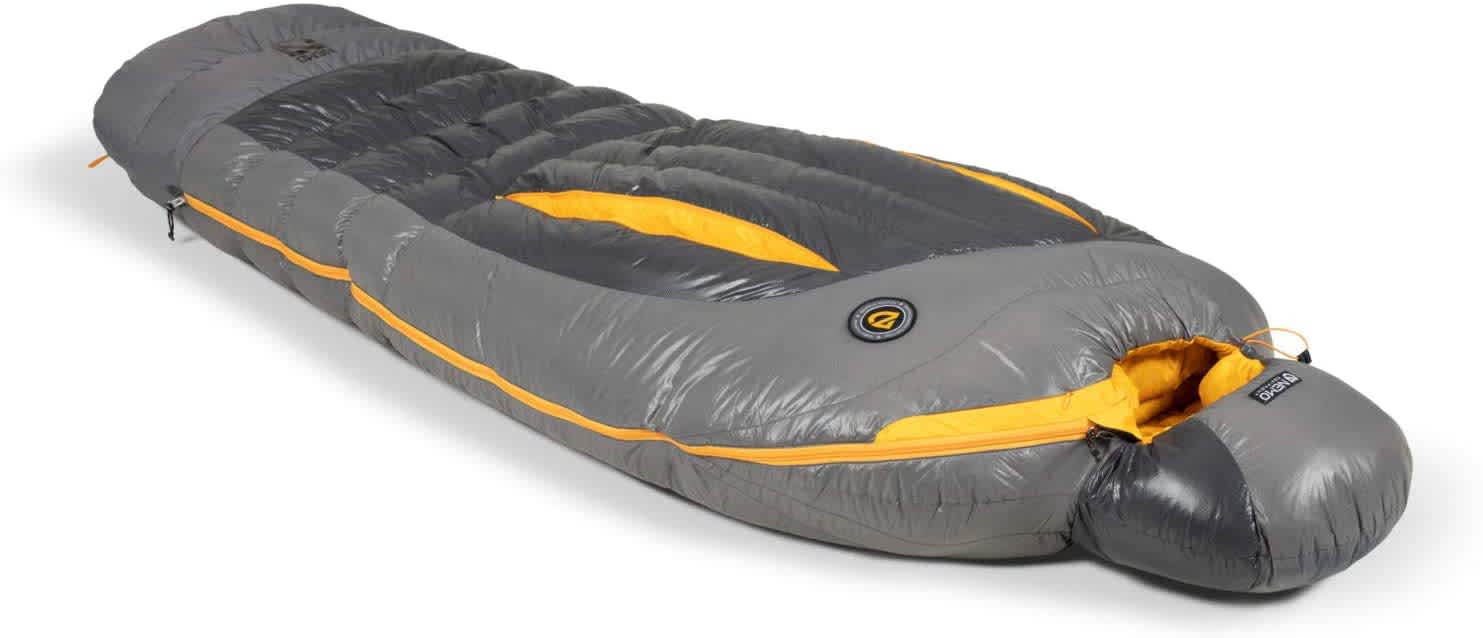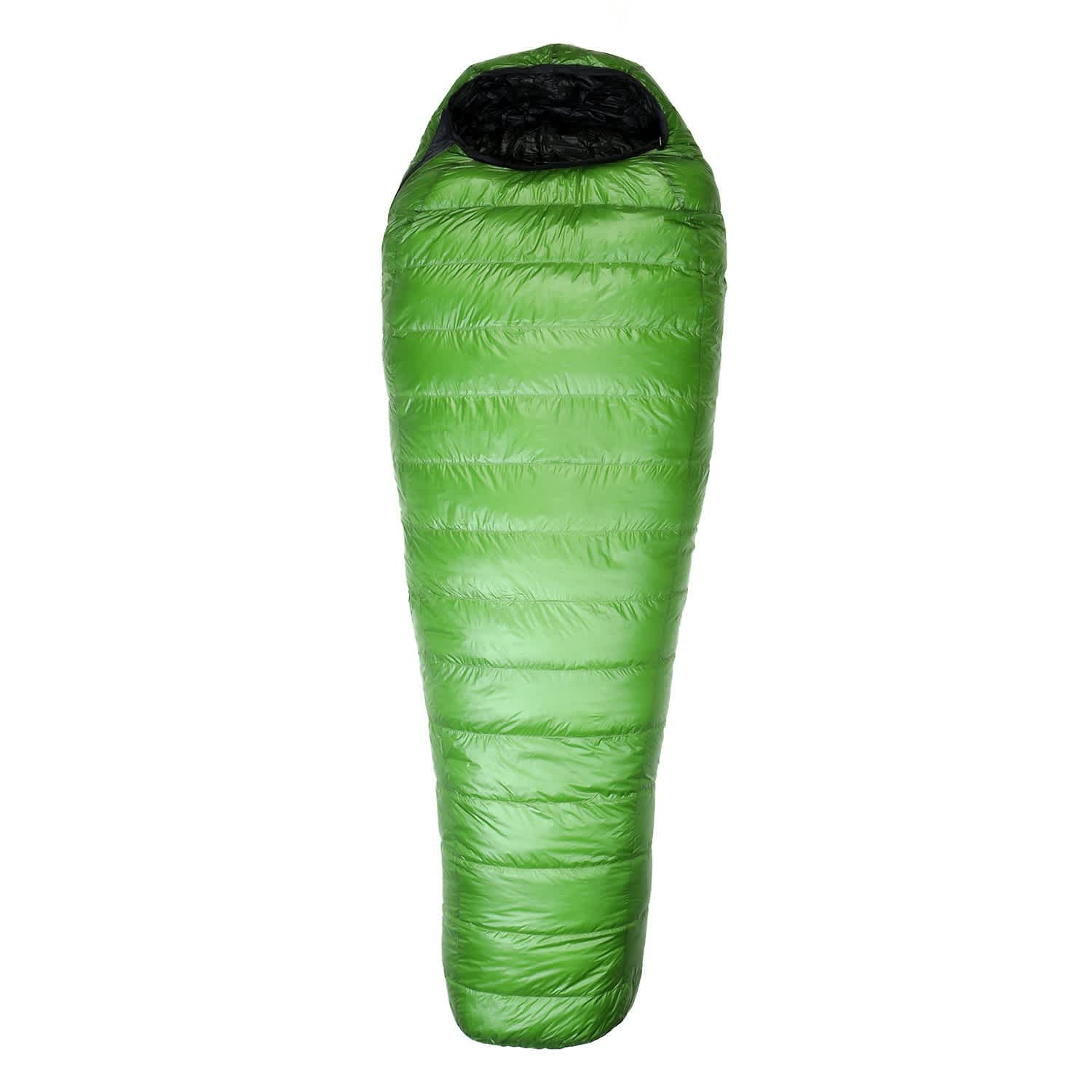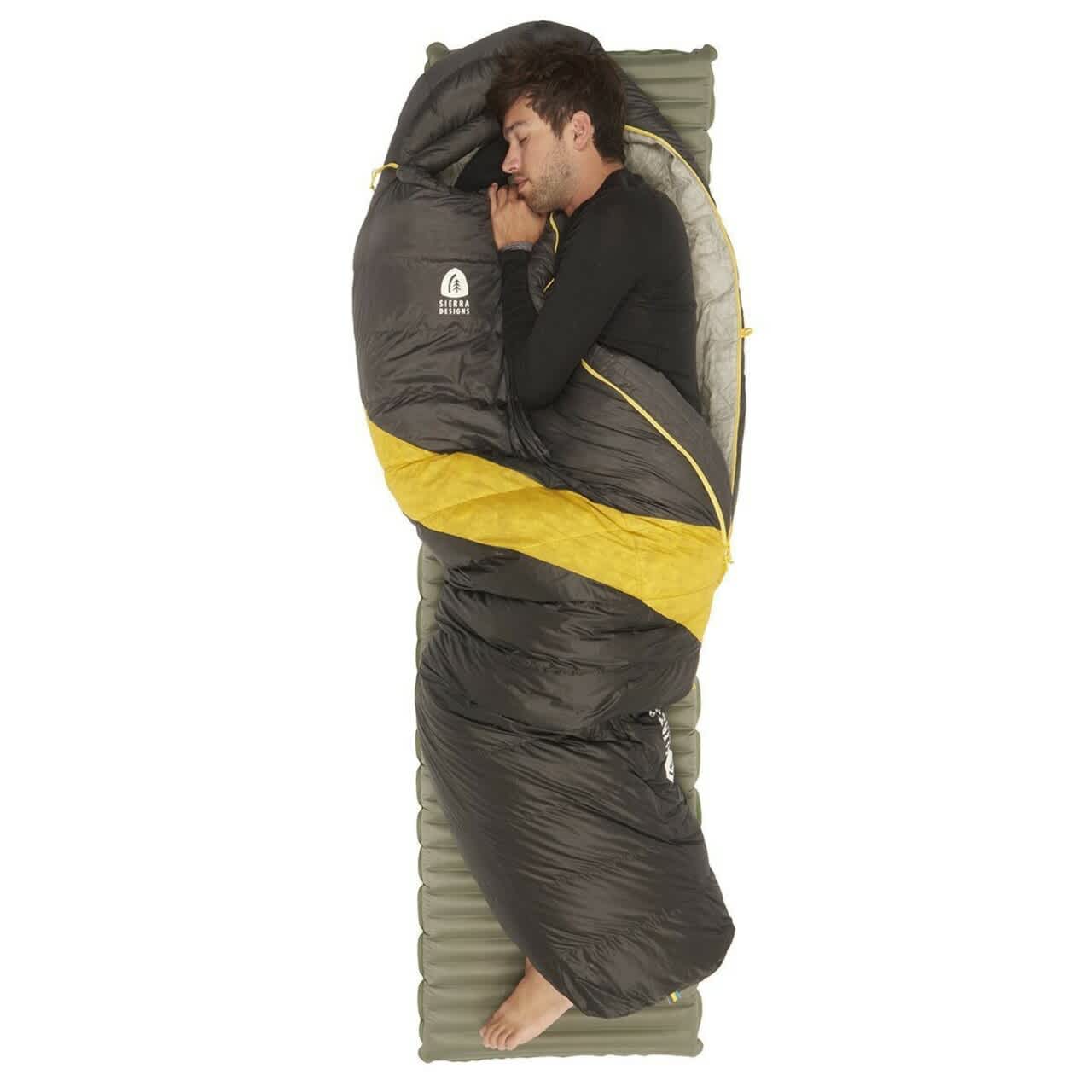
+
–
Table of Contents
1. Nemo Kayu 800-Fill Down Mummy Sleeping Bag – Editor’s Pick
The two chief concerns for any hunting backpacking trip are 1. Making sure you can actually get some rest and stay warm and 2. weight. The Nemo Kayo is a great balance of price, warmth, and portability without sacrificing quality. The bag features a 30-degree rating meaning it can handle some mildly cold temperatures but what is great about the Kayo is that it features ThermoGills which you can unzip to allow more airflow in if things get too hot.
Pros/Good combination of cold resistance, adaptability and lightweight desgin
Cons/Doesn’t work very well in temperatures below 30-degrees
Bottom Line/As close as you can get to an all season sleeping bag but with good cold resistance
2. NEMO Sonic 0
Our last selection was a bit on the light side of things and will indisputably be the king in terms of weight on this list. The NEMO Sonic 0 is a down-filled sleeping bag that doesn’t weigh much more but still offers a lot more comfortable when it comes to cold temperatures. The bag is overstuffed with 800 FP hydrophobic down that gives it its heat retention and also features the adjustable ThermoGills that allow you to cool things off a bit if you’re not trying to sleep in a complete blizzard.
Pros/Great protection against the bitter cold and still Light enough to be carried
Cons/Quite Expensive
Bottom Line/If you’re looking for the best bag for a comfortable sleep – this one is worth the price
3. Mountain Hardwear Phantom 0F/-18C Sleeping Bag
Coming in at just under 3lbs, the Mountain Hardwear Phantom is one of the warmest bags on the market. Many cheaper bags will claim to have a 0-degree performance standard but when put to the test by hardcore campers and reviewers, they tend not to add up. Not the case with the Phantom 0. The Phantom 0 has some of the best review ratings I’ve ever seen for a sleeping bag and that in itself makes it worth looking at despite its high prices. The bag features 850 fill down, and also comes with a convenient compression sack making it easier to stow away when you’re ready to break camp.
Pros/Excellent heat retention capabilities for a warm nights sleep
Cons/Super expensive
Bottom Line/Best suited for the ultra-hardcore and dedicated backcountry hunter
4. Western Mountaineering Versalite 10
One of the best options for a lightweight yet comfortable bag, the Western Mountaineering Versalite 10 lives ups to its name. The Versalite is indisputably the slightest backcountry sleeping bag in its class getting down to almost exactly 2lbs in weight and is also very compact in its size. The bag is filled with 20 ounces of genuine goose down and this makes for a comfortable sleep in and even has enough room for you to wear an additional jacket if things get really cold.
Pros/Ultra lightweight, compact and yet roomy
Cons/Not as cold resistant as other bags on this list
Bottom Line/A versatile bag for those heavily concerned with weight.
5. Sierra Designs Nitro 0 Degree DriDown Sleeping Bag
This last entry to the list is a great blend of the three factors most backpacking hunters are concerned about. Featuring great cold-weather performance, a more approachable starting price, and weighing in just under 3lbs, the Nitro 0 DriDown sleeping bag is a great option for those looking for a good balance of factors. Numerous reviews state that this bag tends to be more comfortable than its counterparts and sleeps decently warm for a bag with its capabilities.
Pros/Compact and Lightweight, Comfortable to Sleep on.
Cons/Some find the bags total height to be a bit short so if you’re very tall this one isn’t for you
Bottom Line/Perfectly balanced, as all things should be
What to look for in backcountry hunting equipment
You’re headed deep in country to chase after the toughest big game animals around. This is the trip of a lifetime. Packing the right gear is essential for the success of the hunt, so how do you pick the right stuff? It is entirely up to you, but here are a few things to consider.
- Quality – This is no time to worry about price, instead look for the best quality gear that you can afford
- Weight – You’re packing everything in on your back, or maybe a horse, so keep the weight to a minimum without sacrificing the features
- Features – Make sure the gear will do exactly what you need it to, and this includes temperature rating for sleeping bags
- Necessity – If you don’t absolutely need it, it shouldn’t go, so look for alternatives
- Plan – Look at every aspect of the trip and make sure you have a plan and everything you take will help you complete that plan – And plan for a successful hunt
What’s the difference between regular hunting and backcountry hunting?
While some of you readers out there might have access to hundreds or maybe even thousands of acres of private land to hunt on, most of us don’t. Backcountry hunting usually means you have to go well off the beaten (and populated) path to get to your hunting spot and this usually means being about 10-15 miles into the wilderness and also usually means camping out in said wilderness for a number of days. If you’re just learning this then you’re also now just realizing why backcountry hunters are obsessed with weight savings in their gear.
How heavy is too heavy for a backcountry hunting sleeping bag?
Backcountry hunts generally take place in places with a lot of cold weather and the game you usually hunt out there also lives in the more northern regions of the continent. I could recommend to you a bunch of 1lb sleeping bags but you’d just end up freezing to death in the process. I find that the best combination of cold weather protection and weight savings comes in at about the 2-3 pound range. Much above that and you’re just carrying around needless weight as most of the bags on this list will comfortably sleep you down to 0°F.
I see fill weight mentioned a lot. What does that mean?
The fill weight of your sleeping bag is going to be primarily responsible for how much cold weather you can resist. Since most sleeping bags aren’t internally heated, they rely on your body’s natural heat to warm the inside of the sleeping bag and your bag’s fill will help trap all that heat inside. More fill means better heat retention but also means more weight. It’s best to find a good balance between the two to fit your exact situation but generally, an 800 fill is suitable for most freezing temperatures.
We are committed to finding, researching, and recommending the best products. We earn commissions from purchases you make using the retail links in our product reviews. Learn more about how this works.






